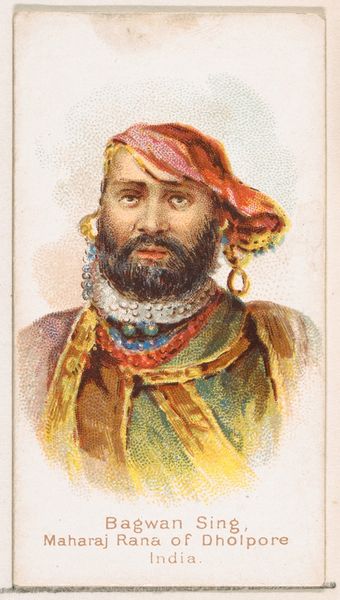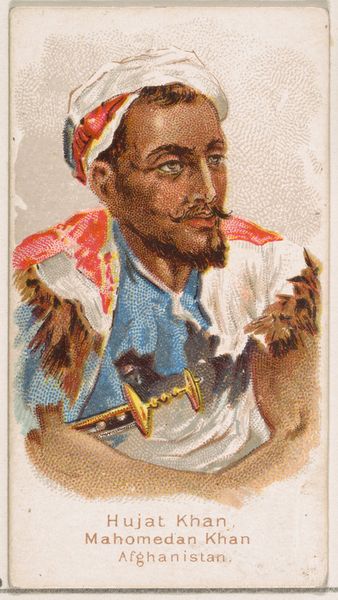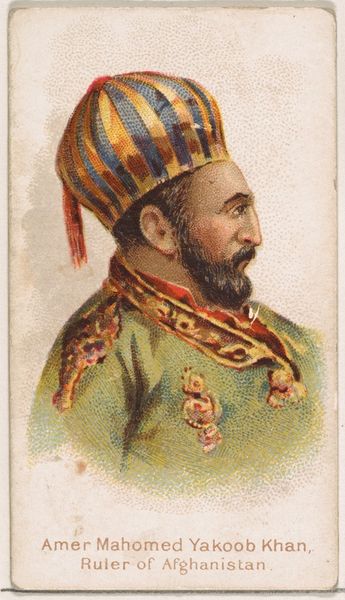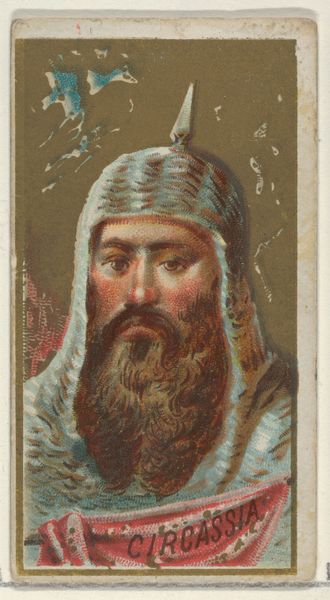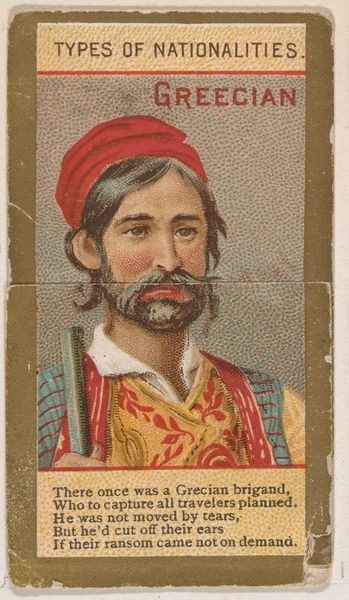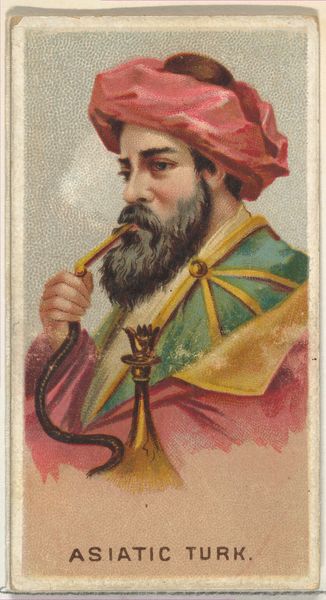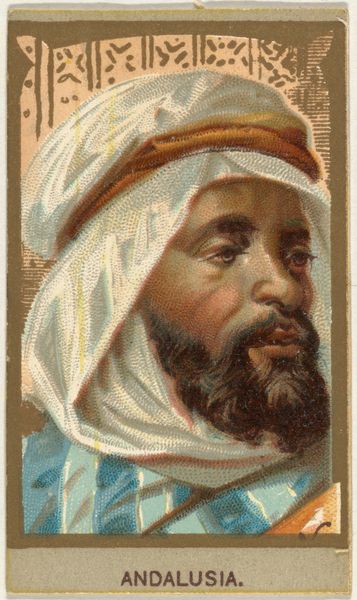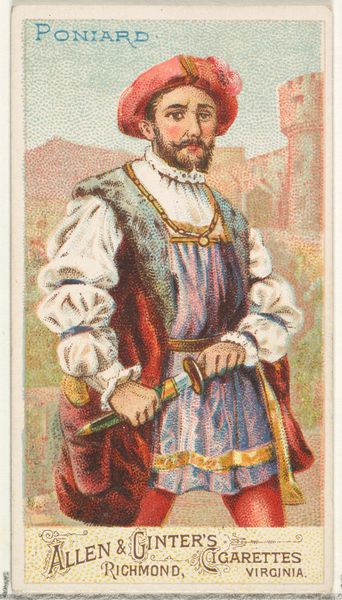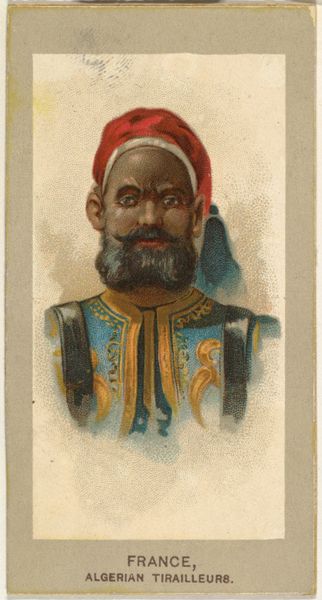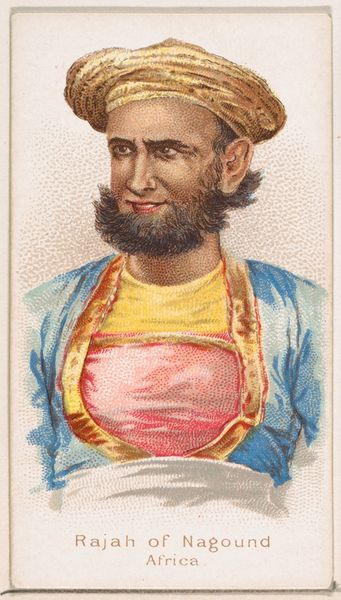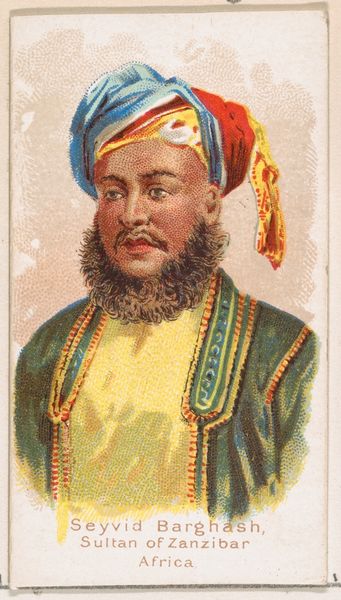
Sayid Mahmoud, Badshah of Kumar, Afghanistan, from the Savage and Semi-Barbarous Chiefs and Rulers series (N189) issued by Wm. S. Kimball & Co. 1888
0:00
0:00
drawing, coloured-pencil, print
#
portrait
#
drawing
#
coloured-pencil
# print
#
caricature
#
coloured pencil
#
orientalism
Dimensions: Sheet: 2 11/16 × 1 1/2 in. (6.8 × 3.8 cm)
Copyright: Public Domain
Curator: This striking chromolithograph from 1888 presents Sayid Mahmoud, the Badshah of Kumar, Afghanistan, part of a series issued by the Wm. S. Kimball & Co. Editor: Wow, that’s quite the handlebar mustache! I’m getting a "Tintin" vibe, with a hint of colonial-era exoticism. It has a strangely flattened affect to it, very unlike other contemporary images. Curator: It's important to remember these cards were primarily aimed at consumers of tobacco products. Consider the labor involved in creating these cards en masse. From the sourcing of materials, to the artistry and machinery that transferred it to paper; all contributing to the appeal of a cigarette brand. Editor: It makes you think about how these small prints could be distributed so widely, and the power those images would have. This guy, Sayid, he's almost a caricature, right? Look at the colours—they feel, how do I say, “heightened” for dramatic effect. Curator: That vibrant colour speaks directly to consumer culture, presenting Sayid as part of a curated collection that implies a sweeping knowledge of distant lands, easily obtained through collecting cigarette cards. And in looking at it with contemporary eyes, we have to take account of its Orientalist undertones and implications about labour, especially since the artist is uncredited here. Editor: Absolutely. It is pretty striking how we're meant to accept the title: 'Savage and Semi-Barbarous Chiefs'. The actual lived experience of the Badshah has no space to be heard, really. What could he have thought, if he ever saw his likeness used this way? The artifice on display seems almost tragic when you put it in those terms. Curator: These objects are such rich portals to examining nineteenth-century marketing and its dependence on exoticising other cultures. That flattened affect you mentioned—it contributes to the flattening of complex cultures into easily consumed images and, ultimately, commodities. Editor: Indeed. I find that realization unexpectedly melancholic, actually. And seeing that pipe adds another layer—almost like, this is how things are traded between them, on these vastly uneven terms. So many narratives tied into this tiny coloured print, a whole world crammed onto a small square of paper. Curator: Precisely.
Comments
No comments
Be the first to comment and join the conversation on the ultimate creative platform.
